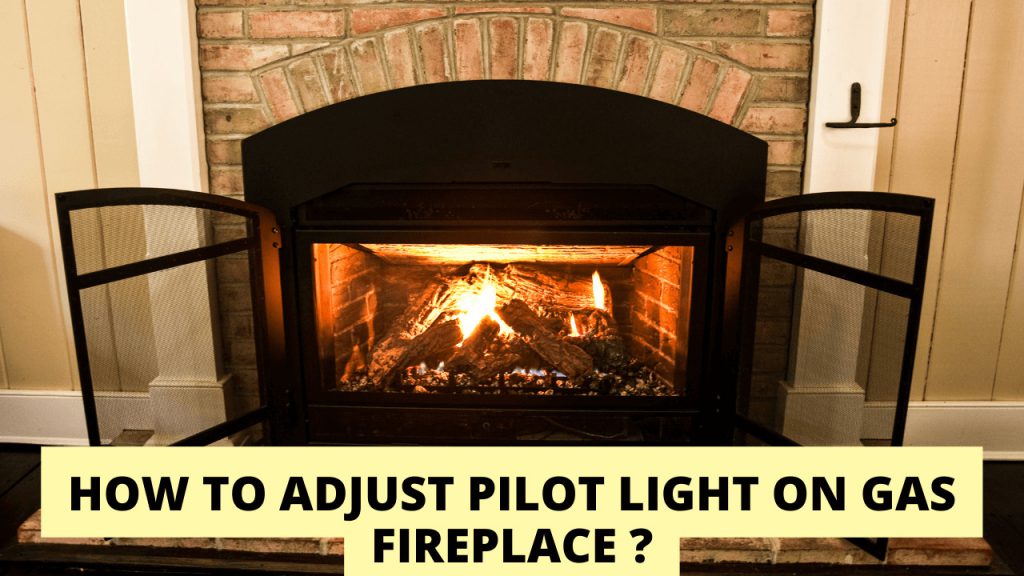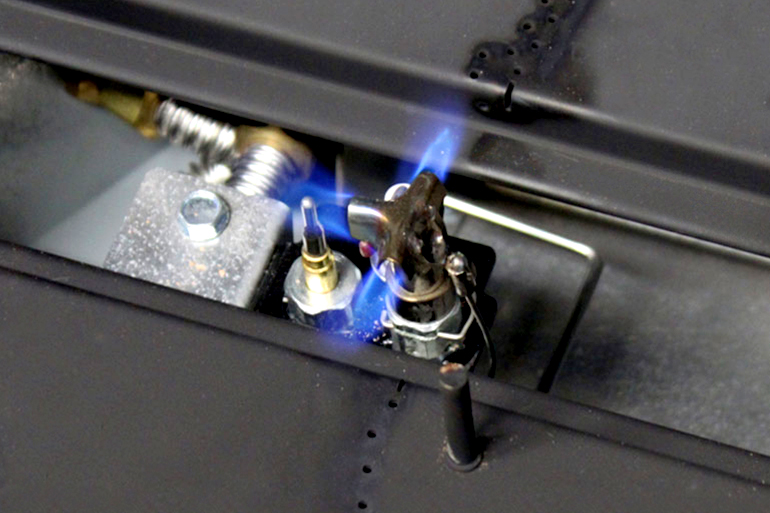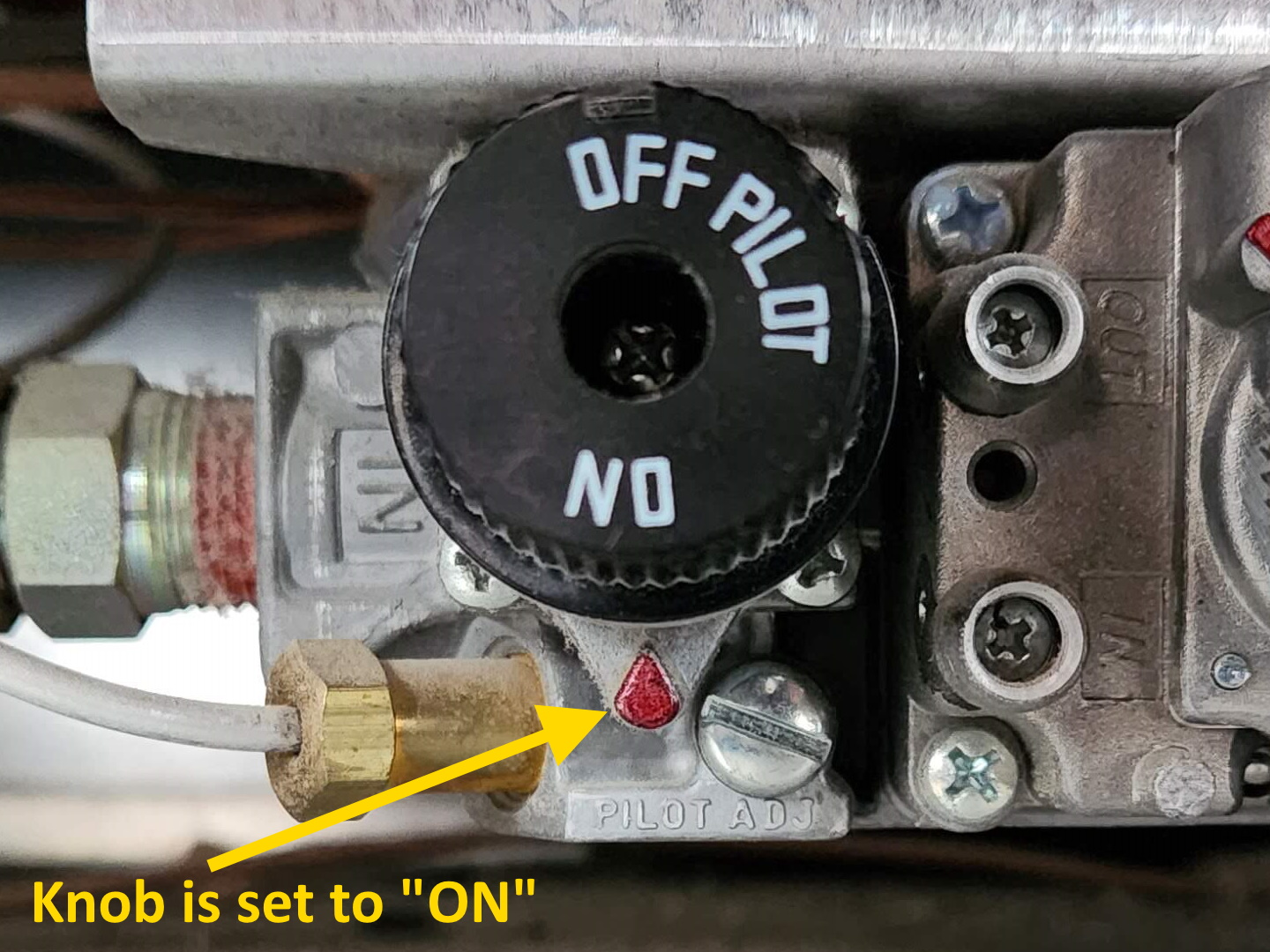How To Relight The Pilot Light On A Gas Fireplace

A cold hearth on a winter's evening is a disappointment. One of the most common issues with gas fireplaces is a pilot light that refuses to stay lit. It can be frustrating, but often, it’s a problem you can diagnose and fix yourself. This guide will walk you through a safe, step-by-step approach to troubleshooting and relighting your gas fireplace pilot light. Remember, if at any point you feel uncomfortable or unsure, it's always best to call a qualified professional. Gas can be dangerous, so safety always comes first.
Understanding the Pilot Light System
Before we dive into troubleshooting, let's quickly understand how a gas fireplace pilot light works. The pilot light is a small, continuous flame that serves as the ignition source for the main burner. When you turn on your fireplace, the gas flows to the main burner, and the pilot light ignites it. If the pilot light is out, the main burner won't light.
The pilot light assembly typically includes:
- The pilot light itself: The small flame.
- A thermocouple or thermopile: A safety device that senses the heat from the pilot light. If the pilot light goes out, the thermocouple cools down, shutting off the gas supply to the pilot light. This prevents gas from leaking into your home.
- A gas valve: Controls the flow of gas to the pilot light and main burner.
Step-by-Step Troubleshooting Guide
Here’s a systematic approach to diagnosing and potentially fixing your pilot light issue. Remember to always follow these steps in order and proceed with caution.
1. Safety First: Shut Off the Gas Supply
Before you do anything, locate the gas shut-off valve for your fireplace. This is usually located near the fireplace, either on the wall or on the floor. Turn the valve to the "OFF" position. This will cut off the gas supply to the fireplace, ensuring your safety during the troubleshooting process. Let the unit sit for at least 5-10 minutes to allow any residual gas to dissipate. This is a crucial safety precaution.
2. Locate the Pilot Light Assembly
Open the access panel to your fireplace. This is usually located at the bottom of the fireplace. You should be able to see the pilot light assembly. Refer to your fireplace owner’s manual for specific location if you are having trouble finding it. It will look like a small metal assembly with a tiny nozzle where the flame should be. You should also see the thermocouple or thermopile nearby.
3. Inspect the Area
Carefully inspect the area around the pilot light assembly. Look for any obvious signs of damage, such as:
- Loose connections: Check the gas lines and connections to the pilot light assembly. Make sure they are securely fastened.
- Dirt or debris: Dust, cobwebs, or other debris can clog the pilot light orifice and prevent it from lighting.
- Damaged components: Look for any signs of rust, corrosion, or physical damage to the pilot light assembly, thermocouple, or gas valve.
4. Cleaning the Pilot Light Orifice
A clogged pilot light orifice is a common cause of pilot light problems. Here's how to clean it:
- Turn off the gas: Ensure the gas supply is still turned off at the shut-off valve.
- Locate the pilot light orifice: This is the small opening where the gas comes out to create the pilot flame. It is often a tiny hole in the pilot light assembly.
- Use a thin wire or needle: Gently insert a thin wire or needle into the orifice to clear any debris. Be careful not to damage the orifice. You can also use a can of compressed air to blow out the orifice.
- Reassemble (if necessary): If you disassembled any parts to access the orifice, carefully reassemble them.
5. Relighting the Pilot Light (Following Manufacturer’s Instructions)
This is the most important step, and you must follow the instructions printed on your fireplace or in your owner's manual exactly. These instructions are designed for *your* specific unit, and deviation could be dangerous.
However, a general procedure usually involves these steps:
- Locate the gas control valve: This is usually a knob or switch near the pilot light assembly.
- Set the control valve to "Pilot": You may need to press and hold the knob in this position.
- Press the igniter button: This will create a spark to ignite the pilot light. You may need to press it repeatedly until the pilot light ignites. Some fireplaces have a push-button igniter, while others have a separate spark igniter.
- Observe the pilot light: Once the pilot light is lit, continue to hold the control valve in the "Pilot" position for 20-30 seconds. This allows the thermocouple to heat up and sense the flame.
- Release the control valve: Slowly release the control valve. If the pilot light stays lit, you have successfully relit it. If the pilot light goes out, repeat steps 2-5. If it continues to go out after several attempts, there's likely another issue.
- Turn the control valve to "On": Once the pilot light is stable, turn the control valve to the "On" position to activate the main burner.
6. Checking the Thermocouple
The thermocouple is a safety device that ensures the gas supply to the pilot light is shut off if the pilot light goes out. If the thermocouple is faulty, it may not be able to sense the heat from the pilot light, even if the pilot light is lit, and it will shut off the gas supply.
Here’s how to check the thermocouple (though **this often requires specialized tools and should be done by a professional if you are not comfortable**):
- Visual Inspection: Check for any visible signs of damage, such as corrosion, cracks, or breaks.
- Continuity Test (Requires a Multimeter): Disconnect the thermocouple from the gas valve. Set your multimeter to the continuity setting. Place one probe on the tip of the thermocouple and the other probe on the other end of the thermocouple. If the multimeter shows continuity, the thermocouple is likely good. If it doesn't show continuity, the thermocouple is faulty and needs to be replaced.
- Millivolt Test (Requires a Multimeter): With the pilot light lit and the thermocouple connected to the gas valve, use a multimeter to measure the millivolt output of the thermocouple. The reading should be within the range specified by the manufacturer (usually around 20-30 millivolts). If the reading is too low, the thermocouple is likely faulty and needs to be replaced.
Replacing a thermocouple is a relatively simple repair, but it's crucial to use the correct replacement part and follow the manufacturer's instructions carefully. If you're not comfortable doing this yourself, it's best to call a qualified technician.
7. Checking the Gas Valve
The gas valve controls the flow of gas to the pilot light and main burner. If the gas valve is faulty, it may not be able to supply gas to the pilot light, even if the pilot light is lit. This is less common, but still a possibility.
Testing and repairing a gas valve is generally best left to a qualified technician. It involves working directly with the gas supply and requires specialized knowledge and tools. Attempting to repair a gas valve without proper training can be extremely dangerous.
When to Call a Professional
While many pilot light issues can be resolved with simple troubleshooting, there are situations where you should always call a qualified technician:
- You smell gas: If you smell gas at any time, immediately shut off the gas supply to the fireplace and call your gas company or a qualified technician. Do not attempt to relight the pilot light.
- The pilot light won't stay lit after several attempts: If you've tried relighting the pilot light several times and it still goes out, there's likely a more serious problem.
- You suspect a gas leak: If you suspect a gas leak, even if you don't smell gas, it's best to err on the side of caution and call a qualified technician.
- You're uncomfortable working with gas appliances: If you're not comfortable working with gas appliances, it's always best to call a qualified technician.
- You've identified a faulty gas valve: Gas valve repairs should always be performed by a qualified technician.
- The problem persists after cleaning the orifice and checking the thermocouple: This indicates a deeper issue that requires professional diagnosis and repair.
- You notice any signs of damage to the gas lines or components: Any damage to the gas lines or components should be addressed by a qualified technician.
Preventative Maintenance
Regular maintenance can help prevent pilot light problems and keep your gas fireplace running smoothly. Here are a few tips:
- Annual Inspection: Have your gas fireplace inspected annually by a qualified technician. They can identify potential problems before they become major issues.
- Cleaning: Regularly clean the area around the pilot light assembly to remove dust and debris.
- Check for Leaks: Periodically check for gas leaks using a soapy water solution. Apply the solution to the gas lines and connections. If you see bubbles, there's a leak.
By following these steps, you can confidently troubleshoot and potentially fix many common pilot light problems with your gas fireplace. Remember to prioritize safety and call a qualified technician if you're ever unsure or uncomfortable. A well-maintained gas fireplace can provide years of warmth and enjoyment.
Disclaimer: This guide is for informational purposes only and should not be considered a substitute for professional advice. Gas appliances can be dangerous, and it's essential to follow all safety precautions and consult with a qualified technician if you have any concerns.










